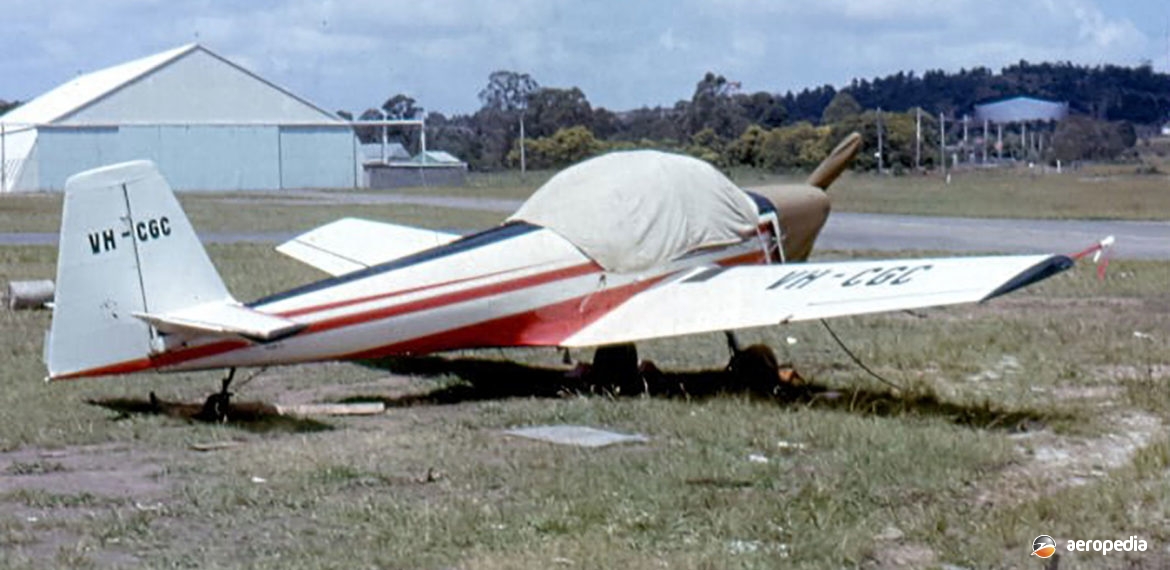Photograph:
Australia’s only PZL Kos VH-CGC (c/n 209) at Bankstown, NSW in 1962 (David C Eyre)
Country of origin:
Poland
Description:
Two-seat light touring and training monoplane
Power Plant:
One 71 kw (95 hp) Continental C-90-12F four-cylinder horizontally-opposed air-cooled engine
Specifications:
- Wingspan: 8.50 m (27 ft 9 in)
- Length: 7 m (22 ft 10 in)
- Height: 1.88 m (6 ft 2 in)
- Wing area: 11.05 m² (119 sq ft)
- Max speed: 193 km/h (120 mph)
- Cruising speed: 174 km/h (108 mph)
- Stalling speed flaps down: 77 km/h (48 mph)
- Rate of climb at sea level: 247 m/min (810 ft/min)
- Service ceiling: 4,602 m (15,100 ft)
- Endurance: 4 hrs 15 min
- Range cruising at 164 km/h (102 mph): 644 km (400 miles)
- Fuel capacity: 75 litres (16.5 Imp gals)
- Take-off run: 208 m (682 ft)
- Empty weight: 404 kg (809 lb)
- Loaded weight: 630 kg (1,390 lb)
History:
The PZL-102 Kos (Blackbird) was designed and developed by Polskie Zaklady Lotnicze (PZL), the prototype powered by a 48 kw (65 hp) Narkiewicz four-cylinder horizontally-opposed air-cooled engine, flying for the first time on 21 May 1958. It was developed to the PZL-102B with a 71 kw (95 hp) Continental engine driving a two-blade fixed-pitch wooden propeller. Production aircraft were exported to Brazil, The Lebanon and Finland for training and touring use. With load factors of + 4.5/-2.25 G it could be fitted with either a dual wheel or stick controls. Construction was all-metal with some fabric covering. The brakes were pneumatic. Fuel capacity was 75 litres (16.5 Imp gals) in a fuselage centre-section tank. Only a few are known to survive overseas. One survivor in South Africa (ZS-UDI) has a Continental O-200 engine installed.
One example of the Kos was imported to this region for Kingsford Smith Aviation Services Ltd, later Austerserve, importers of the Auster series. Imported via Motoimport in early 1962, and painted as VH-CGC, it conducted some testing for a Certificate of Airworthiness but this was not forthcoming. The aircraft was dismantled and returned to Poland. It is believed the Department of Civil Aviation required some 187 modifications before the aircraft could fly in Australia, some 127 being required before it could be certified. The aircraft later became SP-GLO and later SP-EFA, eventually being retired and placed in storage.

